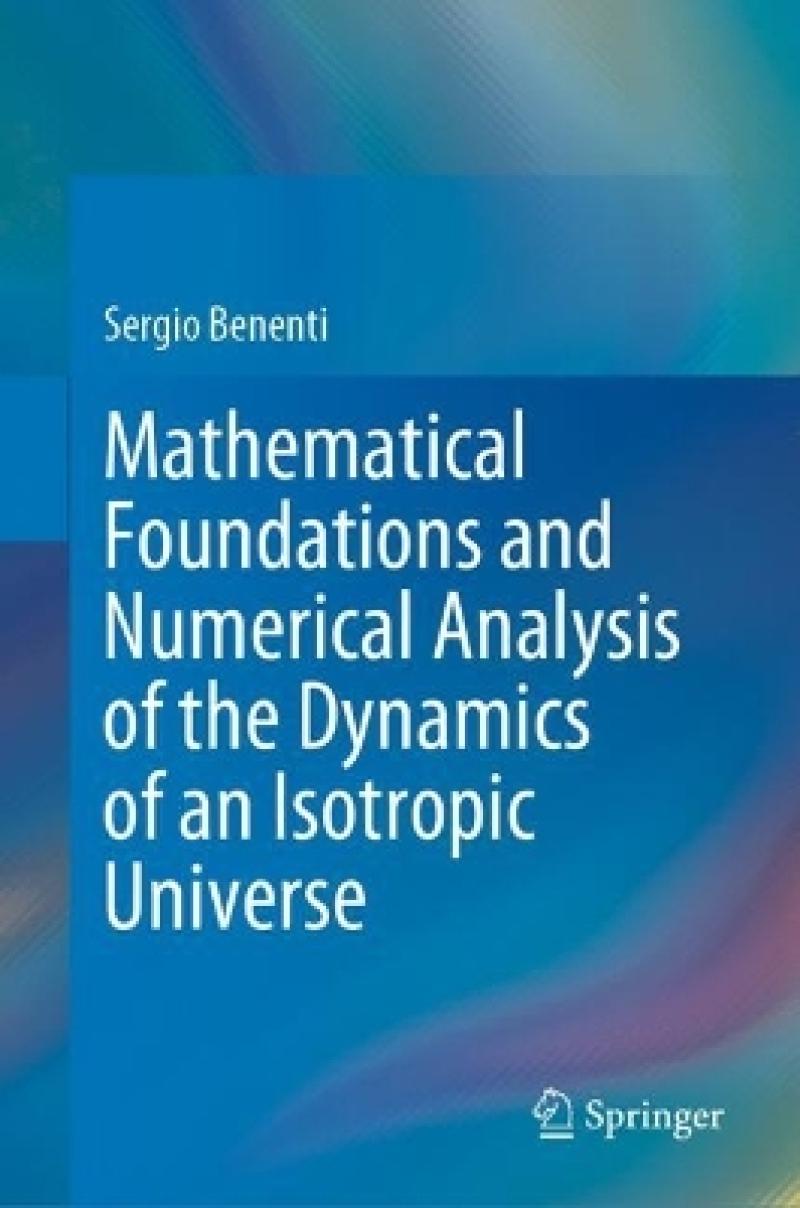This book is an enhanced and expanded English edition of the treatise “Fondamenti matematici e analisi numerica della dinamica di un Universo isotropo,” published by the Accademia delle Scienze di Torino in volume no. 42-43, 2018-2019. The book summarizes some of the principal findings from a long-term cosmology research project, aiming to clarify significant results through clear mathematical postulates. Despite efforts, a single mathematical model accurately describing the universe’s evolution remains elusive due to early universe complexity and numerous observational parameters. Over the past century, various models have been proposed and discarded, illustrated by debates on the cosmological constant and spatial curvature assumptions. Currently, many models lack clear foundations, causing confusion in the field. Standard cosmological approaches rely on principles like Weyl’s principle, homogeneity, and isotropy, but may overlook discerning purely geometrical properties from those dependent on field equations. This book aims to bring order to cosmology by starting from understandable mathematical postulates, leading to theorems. Disagreements on postulates can prompt adjustments or alternative approaches. Physics often consists of deductive theories lacking explicit delineation of underlying concepts and postulates, a criticism relevant to cosmological theories. Despite a late 1990s consensus on the Lambda cold dark matter model, the absence of a logical-deductive structure in literature complicates understanding, leading some to humorously dub it the “expanding Universe and expanding confusion.”
1. Geometry of the cosmic space-time.- 2. Bridge-postulates.- 3. Relativistic cosmic dynamics.- 4. Numerical cosmology.- 5. Signal transmission and visibility.- 6. Cosmic redshift.- 7. Appendices.
This book is an enhanced and expanded English edition of the treatise “Fondamenti matematici e analisi numerica della dinamica di un Universo isotropo,” published by the Accademia delle Scienze di Torino in volume no. 42-43, 2018-2019. The book summarizes some of the principal findings from a long-term cosmology research project, aiming to clarify significant results through clear mathematical postulates. Despite efforts, a single mathematical model accurately describing the universe’s evolution remains elusive due to early universe complexity and numerous observational parameters. Over the past century, various models have been proposed and discarded, illustrated by debates on the cosmological constant and spatial curvature assumptions. Currently, many models lack clear foundations, causing confusion in the field. Standard cosmological approaches rely on principles like Weyl’s principle, homogeneity, and isotropy, but may overlook discerning purely geometrical properties from those dependent on field equations. This book aims to bring order to cosmology by starting from understandable mathematical postulates, leading to theorems. Disagreements on postulates can prompt adjustments or alternative approaches. Physics often consists of deductive theories lacking explicit delineation of underlying concepts and postulates, a criticism relevant to cosmological theories. Despite a late 1990s consensus on the Lambda cold dark matter model, the absence of a logical-deductive structure in literature complicates understanding, leading some to humorously dub it the “expanding Universe and expanding confusion.”
Product details
Biographical note
Sergio Benenti graduated in mathematics with honors in 1968. A year later he became a permanent assistant professor of Rational Mechanics, and in 1980 he was appointed full professor of Rational Mechanics. In 2021 he was awarded the title of professor emeritus. He has been a member of the Turin Academy of Sciences since 1987. His scientific activity has covered several areas of research. First, the separation of the variables of the Hamilton-Jacobi equation, solving by geometrical methods the long-standing problem posed by Levi-Civita. These results, known as Benenti systems, Benenti theorem, and Benenti tensor, have been widely accepted by researchers and have led to numerous publications. He also applied his theory to exact solutions of Einstein's equations, providing particular results that later proved to be useful in the study of black holes. Meanwhile, he worked extensively on symplectic geometry and its applications to mathematical physics. The Steklof Math Institute published (in Russian, 2009) the text of a course held in Turin on this topic. This book was followed by a revisited and expanded English version, published by Springer under the title Hamiltonian Structures and Generating Families (2011). He recently explored nonholonomic mechanical systems, providing a correct and general setting of Gauss's Principle. In addition, he presented the first feasible example of a nonlinear nonholonomic system, showing the inconsistency of several examples so far present in literature. Finally, in the last years, he focused on mathematical models of cosmology, which is currently his main area of research.

